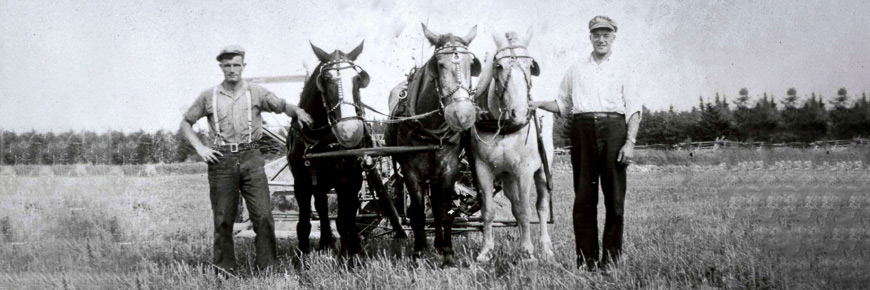
European settlers and former park residents
Kouchibouguac National Park
While French explorers visited and settled parts of New Brunswick beginning in the early 1600s, permanent European settlement in the area, that would become Kouchibouguac National Park, began only in the late 1700s.
The Kouchibouguac River became home to the United Empire Loyalists, who were joined by Scottish, Irish, English, and Prussian immigrants as they developed thriving settlements. Acadians from the Memramcook area settled along the Kouchibouguacis River. Soon, more Acadian families from other areas in New Brunswick and from Gaspésie were attracted to the area. By 1806, all major river estuaries from Escuminac Point to Cape Tormentine were settled. Strong links between the Mi’kmaq and the Acadians, dating back to the arrival of the first European settlers, supported the establishment and survival of these early Acadian communities. The English-speaking settlers in the area also benefited from a close relationship with neighbouring Mi’kmaq communities, as was the case elsewhere in the Maritimes.
While the European settlers were involved in shipbuilding, logging, and fishing, agriculture was an important part of subsistence livelihood for most families. Immediately prior to the establishment of the park, there were approximately 1200 people representing 228 households that comprised seven villages or settlements in what is now Kouchibouguac National Park: Cap-Saint-Louis, Claire-Fontaine, Fontaine, Guimond Village, Kouchibouguac (includes North and South Kouchibouguac, Callanders, Kellys, Petit-Large, Loggiecroft), Rivière-du-Portage, and Saint-Olivier. The most populous of these settlements were Fontaine and Claire-Fontaine, which had their own parish church.
Following the creation of the park most former residents settled in surrounding communities. Some of the former residents continue to fish commercially in the park, while others have become important members of the park’s dedicated staff. Over the past couple of years, interested members of these former communities have worked with Parks Canada to develop ways of interpreting their story.
Related links
- Date modified :